Stamped concrete is a beautiful and durable choice for patios, driveways, and walkways, but like anything exposed to the elements, it needs a little care to keep looking its best. Without regular maintenance, stamped concrete can develop cracks, lose its vibrant color, or start to look dull and worn.
A few simple steps can go a long way in protecting your investment. In this blog, we’ll walk you through practical and easy maintenance tips to help prevent cracks and fading so your stamped concrete stays strong, stunning, and long-lasting.
What Are the Best Stamped Concrete Maintenance Tips?
Stamped concrete is beautiful, durable, and one of the best choices for driveways, walkways, and patios etc. However, to maintain its appearance and longevity, it must be taken care of routinely. To prevent mildew, grime, and dirt from building up, regular cleaning should be done. A rinse with a medium power hose and scrubbing after every few days with a non-abrasive cleaning agent helps preserve the surface finish damage-free.
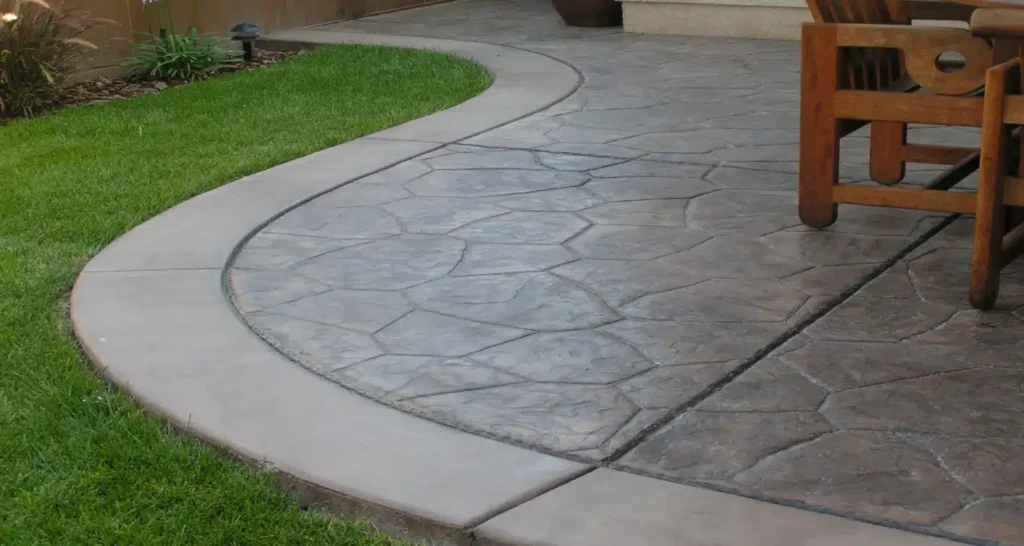
One of the most critical steps is sealing the concrete every 2–3 years. A good sealer enhances the color, adds shine, and protects against stains, moisture, and wear. Be sure to choose a sealer that’s compatible with your stamped concrete finish.
To avoid causing cracks or discoloration on the surface or eroding, harsh chemicals such as deicing salt should be avoided at all costs. If needed, salt is a better option than such chemicals. Also, make sure to install a proper drainage system around the area to avoid weakening the surface and long-term damage from standing water.
With these concrete sealing tips, your stamped concrete can stay looking clean, vibrant, and crack-free for many years.
How Can You Protect Stamped Concrete From Cracking?
A strong foundation is crucial to protect stamped concrete from cracking. The use of a proper base and subgrade preparation will ensure that the surface is less vulnerable to shifting and settling and is stable to avoid cracking.
Incorporating well-placed expansion joints helps control where minor cracks form, directing them along planned lines instead of randomly across the surface. These joints absorb the natural expansion and contraction caused by seasonal temperature changes.
It’s also essential to address any small cracks as soon as they appear. Quick and timely repair prevents them from expanding and causing more serious damage.
Try to avoid keeping large vehicles or heavy loads off the stamped concrete as the weight contributes to structural stress and cracking since stamped concrete surfaces aren’t made to endure heavy loads.
Also, be sure to acknowledge the weather. During winter or colder climatic seasons, freezing of water in the stamped concrete can produce cracks. To be safe from such, install a proper drainage system around the area of the concrete.
How Do You Prevent Fading in Stamped Concrete Surfaces?
To prevent fading in stamped concrete, protecting the stamped concrete surface from UV radiation is crucial. UV rays are one of the leading causes of color fading, especially in outdoor areas like patios and driveways. UV rays dull the vibrant appearance of the concrete by breaking down its pigment over time.
One of the most effective counters to UV radiation damage on stamped concrete is a high-quality, built-in UV protection sealer. Concrete sealers are protective layers that help protect the concrete from harmful elements such as sunlight, wear and tear, moisture, etc. To maintain the beauty of your stamped concrete, reapply a sealer every 2 to 3 years or according to the instructions provided by the manufacturer.
It is also essential to choose the right colour. While choosing a colour, keep in mind that lighter colours reflect more sunlight and absorb less heat than darker colours, thus minimizing fade.
By combining UV-resistant sealers, strategic color choices, and shade solutions, you can significantly prevent fading in stamped concrete and preserve its color and finish for years.
How Often Should You Reseal Stamped Concrete for Best Results?
When it comes to resealing stamped concrete tips, stamped concrete should generally be resealed every 2 to 3 years. Still, it is highly dependent on situations such as direct exposure to sun, vehicle traffic, general wear, and weather, etc.
If you find the surface of your concrete looking patchy, dull or allowing water to soak in instead of bead up, then these are signs that your stamped concrete needs resealing.
While looking for a sealer, be sure to choose the right type of Sealer. Glossy sealers enhance color and provide shine, while matte or penetrating sealers offer a more natural look and may perform better in areas where slip resistance is a concern.
While searching the market for sealers, you might find DIY sealing kits. Still, they are not as effective as professional sealing applications, which ensure even coverage and long-lasting results. Though they might cost more, professional concrete sealing applications are better for durability and appearance, and overall, a good investment.
With regular upkeep and the right products, resealing stamped concrete keeps it looking fresh, vibrant, and protected from damage, maximizing its lifespan and appeal.
What Are Common Mistakes to Avoid When Maintaining Stamped Concrete?
Avoiding stamped concrete maintenance mistakes is key to preserving its beauty and longevity. Using metal shovels or abrasive tools is one of the most common maintenance mistakes while dealing with stamped concrete, as they can easily scratch the decorative surface of the concrete. Be sure to always use plastic shovels and soft brushes for cleaning.
Skipping regular Cleaning and inspection is another major maintenance mistake while dealing with stamped concrete. If left unaddressed, long-term issues can be observed from scratches and dirt buildup. Routine inspection of the surface can help catch problems early and keep the surface at its best.
Small cracks or chips are often ignored by many homeowners who ignore them, thinking that they are no big deal when in reality, these minor flaws can quickly cause severe damage, such as allowing water to seep into the concrete, causing further deterioration.
Over-applying sealer is another frequent issue. Applying too many coats can lead to a cloudy appearance or even cause the sealer to peel and flake. Follow manufacturer guidelines and allow proper drying time between applications.
Lastly, avoid using acidic or high-pH cleaning products, as they can damage the concrete’s finish. Stick to pH-neutral, non-abrasive cleaners designed specifically for decorative concrete surfaces.
By steering clear of these mistakes, you’ll ensure your stamped concrete remains strong, vibrant, and visually appealing for years to come.
Does Weather Impact Stamped Concrete Longevity?
Yes, weather can significantly affect the lifespan of stamped concrete, especially when it comes to stamped concrete in extreme weather conditions. Freeze-thaw cycles in colder climates are particularly harsh, causing the concrete to expand and contract. Over time, this can lead to cracks, surface scaling, or even structural weakening if not correctly managed.
Stamped concrete is a beautiful and durable choice for patplease ios, driveways, and walkways, but like anything exposed to the elements, it needs a little care. For traction, it is better to use sand and always ensure that the surface is sealed with a high-quality sealer.
Stamped concrete can also be worn down by heavy rainfall and poor drainage. The Risk of cracks is increased with water damage, so a proper grading and drainage system must be installed.
While in summer, Prolonged exposure to the sun causes the concrete’s colour to fade because of UV rays. To minimize UV damage, a UV protective sealer must be applied every 2 to 3 years, and adding shade can also be a nice touch.
Wrapping Up: How to Keep Your Stamped Concrete Looking New
To maintain a stamped concrete appearance over the years, proactive care is key. Regular cleaning, timely sealing, and attention to minor issues before they grow can go a long way in preserving both the beauty and integrity of your surface.
Consistent maintenance offers long-term benefits such as enhanced curb appeal, increased durability, and fewer costly repairs down the road. Scheduling routine inspections and resealing every 2–3 years ensures your concrete stays protected from weather, wear, and fading.
For deeper cleaning, repairs, or if you’re unsure about the right products to use, don’t hesitate to consult a professional. Expert help can restore and protect stamped concrete more effectively than DIY efforts alone.
With the proper care and maintenance strategy, your stamped concrete will continue to look fresh, vibrant, and well-kept for years to come.



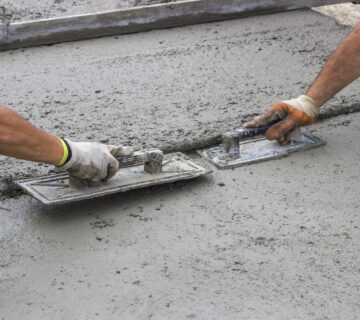

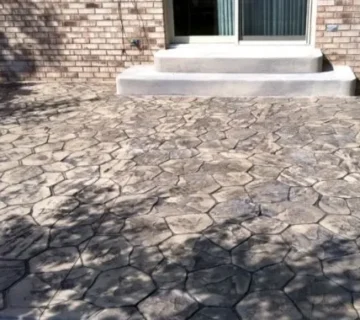
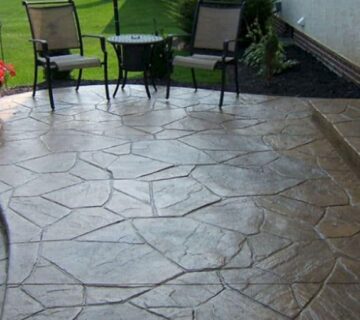
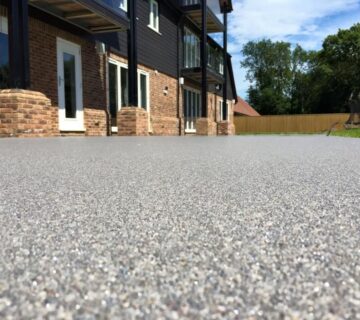
No comment